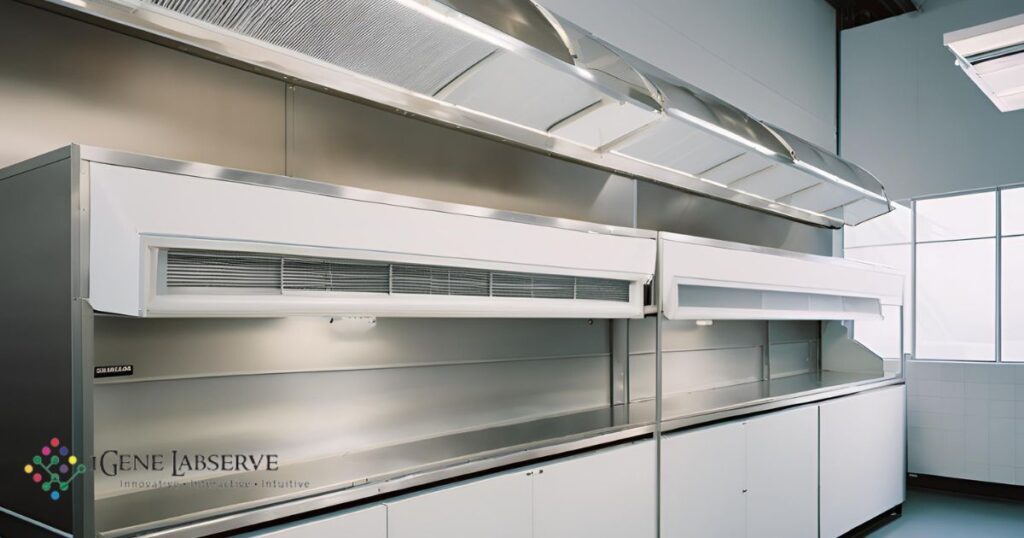Laminar air flow hoods are an integral component of laboratories and helps maintain a sterile environment. They also help protect workers from various hazardous substances. These devices leverage an uninterrupted flow of air to ensure that the laboratory settings are free from contamination and guarantee the safety of workers.
To maintain a clean and sterile environment in the laboratory, the laminar air flow hood flows HEPA-filtered air outwards ad minimizes the chances of contaminated air entering the laboratory workspace. The opportunity of harmful particles or chemicals entering the laboratory is reduced to a great extent due to the flow of filtered air.
Emergence of automated trends in laminar air flow hoods
To understand why automated trends are picking momentum in laminar air flow hoods, you need to know the limitations of the conventional devices at first:
The traditional laminar air flow hoods use high-efficiency HEPA-filtered air to remove contaminants from the environment. However, some parts of laminar flow hood may not be as efficient. Here is a glance on the limitations of the conventional devices:
- Most of them are less efficient when it comes to providing protection to workers from contaminants or hazardous substances. The edges and gaps filter the contaminants easily and compromise the safety of laboratory workers.
- The conventional devices create a lot of noise and prevent workers to communicate with each other in the laboratory environment.
- The traditional devices consume a lot of energy and helps maintain the air flow rate.

Reasons for implementing automation in flow hoods
By implementing innovative technologies in flow hoods, laboratories take the right steps to enhance the efficiency and safety of the settings and the workers. Here they are:
- Enhancing safety for laboratory workers
Making laminar air flow hoods technologically compliant mitigates the dangers of being exposed to contaminants, gases, and hazardous chemicals, making the laboratory settings and its works feel safer.
- Lower the environmental impact
Automation trends in components of laminar flow hood make it more energy-efficient. Naturally, it means reduced operational cost in laboratories.
- Reduce environmental impact
Low consumption of energy may mean reduced emission of greenhouse gases and carbon footprint. Besides, some devices use recycled filters, reducing the chances of waste.
- Boost the productivity and efficiency of laboratories
With automation in laminar air flow hood, the productivity of workers goes up and so does the reliability and accuracy of experiments. It also reduces maintenance hassles and allows laboratory workers to stay focused on their research.
Implementation of technologies
The advancements in laminar air flow designs come with improved mechanisms of sealing to avoid filtering contaminants. It also results in better and improved airflow within the laboratory settings:
- Low airflow laminar flow hoods
The low flow laminar flow devices leverage low rate of airflow compared to conventional hoods. It also reduces energy consumption and offers good protection to laboratory workers.
- Smart laminar flow hoods
The smart hoods are equipped with special sensors that automatically adjust the rate of air flow based on the usage.
- Energy-efficient laminar flow hoods
The energy-efficient hoods have adjustable airflow rates and fan speed and ensure that energy consumption remains low.

Advancements in laminar air flow hood operations
Here are the latest innovations to note in laminar air flow operation:
- Effective controls
The newer devices would have more effective controls that are user-friendly as well, allowing laboratory workers to adjust the rate of airflow and the fan speed.
- New sash positioning systems
With new sash positioning systems, the method of opening the laminar air flow hood becomes improved so that the required rate of airflow can be maintained and energy consumption reduced to a great extent.
Upcoming technologies in flow hoods
With the advancements of technology, there is immense opportunity of improving laminar air flow designs. Here they are:
- Incorporating automation
The incorporation of automation in laminar air flow hoods is deemed to improve the efficiency and accuracy of laboratories. For instance, the sash positioning system ensures that it stays in the right position and naturally caters to a higher level of protections for various tasks.
- Control and monitoring
Control and monitoring of laminar flow hoods helps the laboratory heads ensure that the device operates at the highest level of efficiency and the issues identified easily.
- Improved filtration technology
The filters are critical parts of laminar flow hood that ensures the flow of clean air. With new filtration technologies, the operation of flow hoods become more efficient and removal of contaminants become more effective.
- User-friendly interface
The insertion of a user-friendly interface makes the flow hoods more accessible to laboratory workers. Therefore, intuitive control panels and touch screens make it easy to adjust the settings and track the performance of the monitor.
Laminar flow hoods are an integral part of scientific and industrial laboratories, so automation and advancements improve the safety and efficiency levels. To buy a laminar air flow hood, turn to https://www.igenels.com/ and embrace high-quality devices to aid laboratory experiments.

